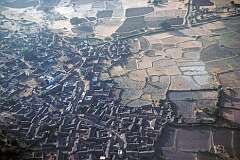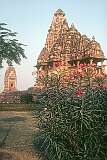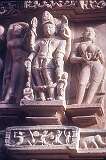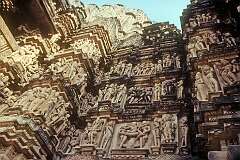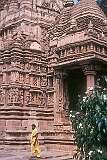Madhya Pradesh, central India: Khajuraho
7-9 November 1979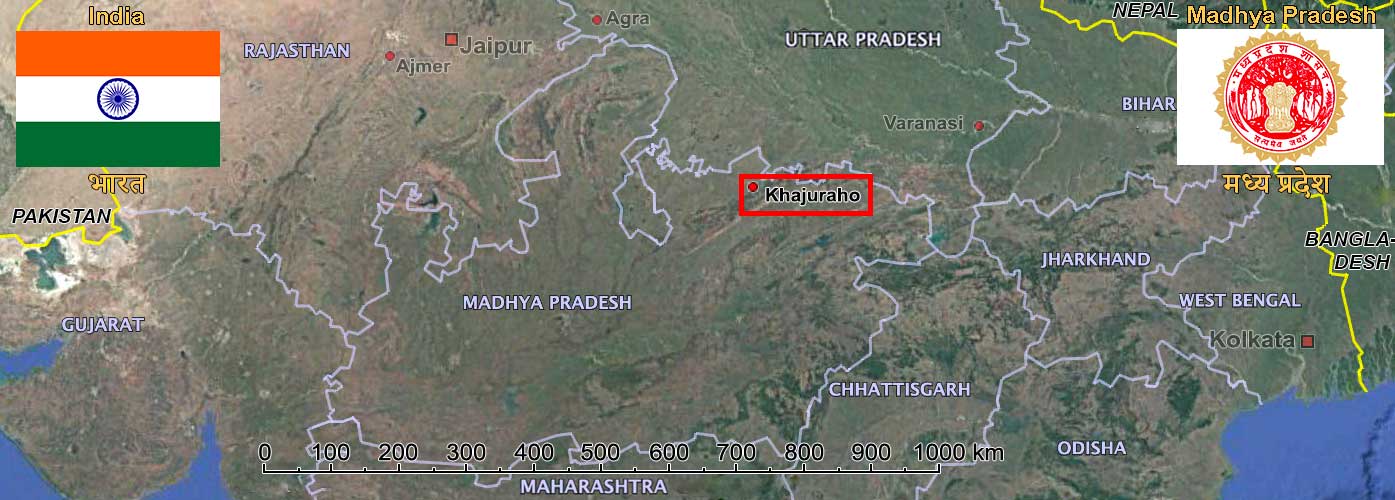
Khajuraho, a small village in Chhatarpur district, Madhya Pradesh, lies amid fertile plains, date palms, and rustic farmlands. Once a remote settlement surrounded by forests and lakes, it was the cultural capital of the Chandela dynasty between the 10th and 12th centuries. The Chandela rulers adorned this quiet region with a magnificent group of temples that reflected their devotion, artistry, and liberal spiritual outlook.
Of the 85 temples built initially, about 25 survive today, forming the famed Khajuraho Group of Monuments, a UNESCO World Heritage Site. Constructed in the Nagara architectural style, these temples are dedicated to both Hindu and Jain deities, illustrating religious harmony. The finest among them — Kandariya Mahadeva, Lakshmana, and Vishvanatha — are masterpieces of proportion and sculptural detail.
The temples’ carvings, especially the celebrated erotic sculptures, symbolise the sacred union of human love and divine creation, blending sensuality with spirituality. Surrounding the temple complex, Khajuraho remains a tranquil rural village, where locals engage in farming, pottery, and traditional crafts. Today, its serene fields and simple village life contrast beautifully with the grandeur of its ancient temples, making Khajuraho both a living village and a timeless monument to India’s artistic and spiritual heritage.
Of the 85 temples built initially, about 25 survive today, forming the famed Khajuraho Group of Monuments, a UNESCO World Heritage Site. Constructed in the Nagara architectural style, these temples are dedicated to both Hindu and Jain deities, illustrating religious harmony. The finest among them — Kandariya Mahadeva, Lakshmana, and Vishvanatha — are masterpieces of proportion and sculptural detail.
The temples’ carvings, especially the celebrated erotic sculptures, symbolise the sacred union of human love and divine creation, blending sensuality with spirituality. Surrounding the temple complex, Khajuraho remains a tranquil rural village, where locals engage in farming, pottery, and traditional crafts. Today, its serene fields and simple village life contrast beautifully with the grandeur of its ancient temples, making Khajuraho both a living village and a timeless monument to India’s artistic and spiritual heritage.






